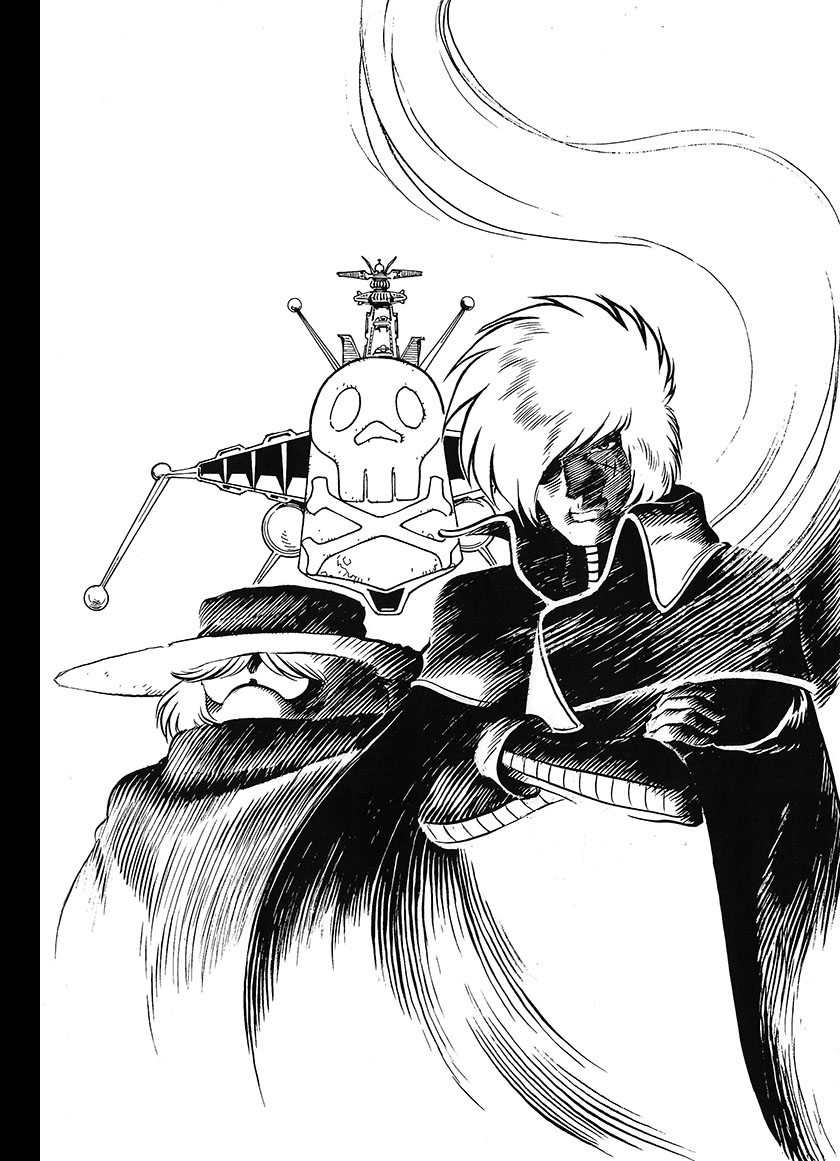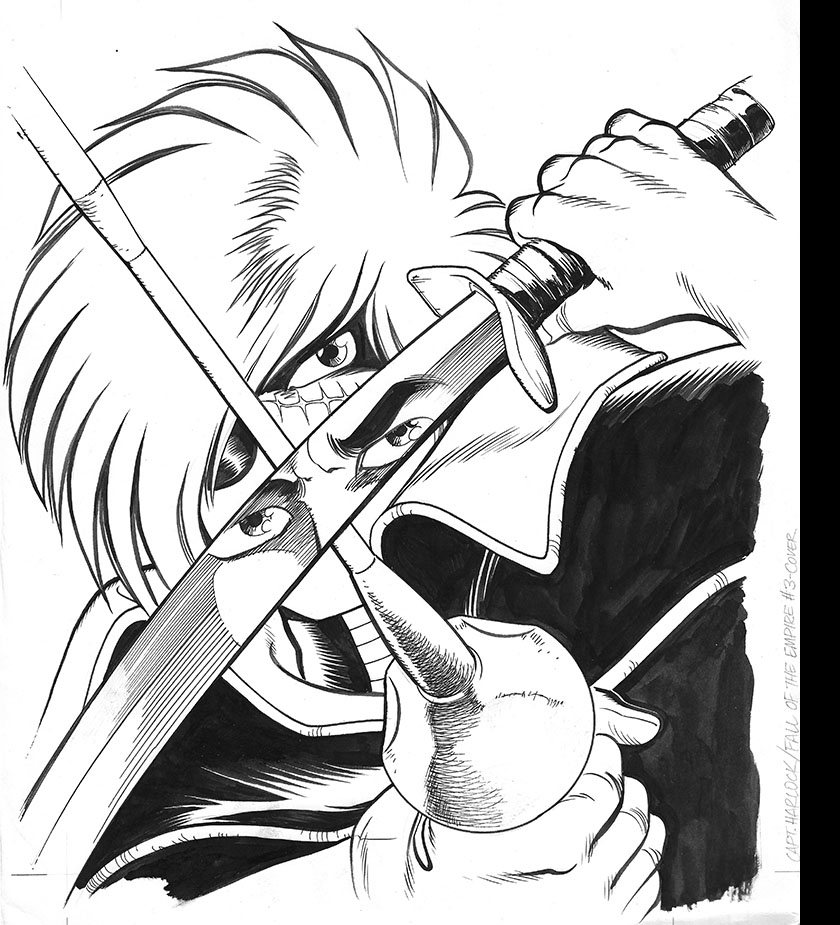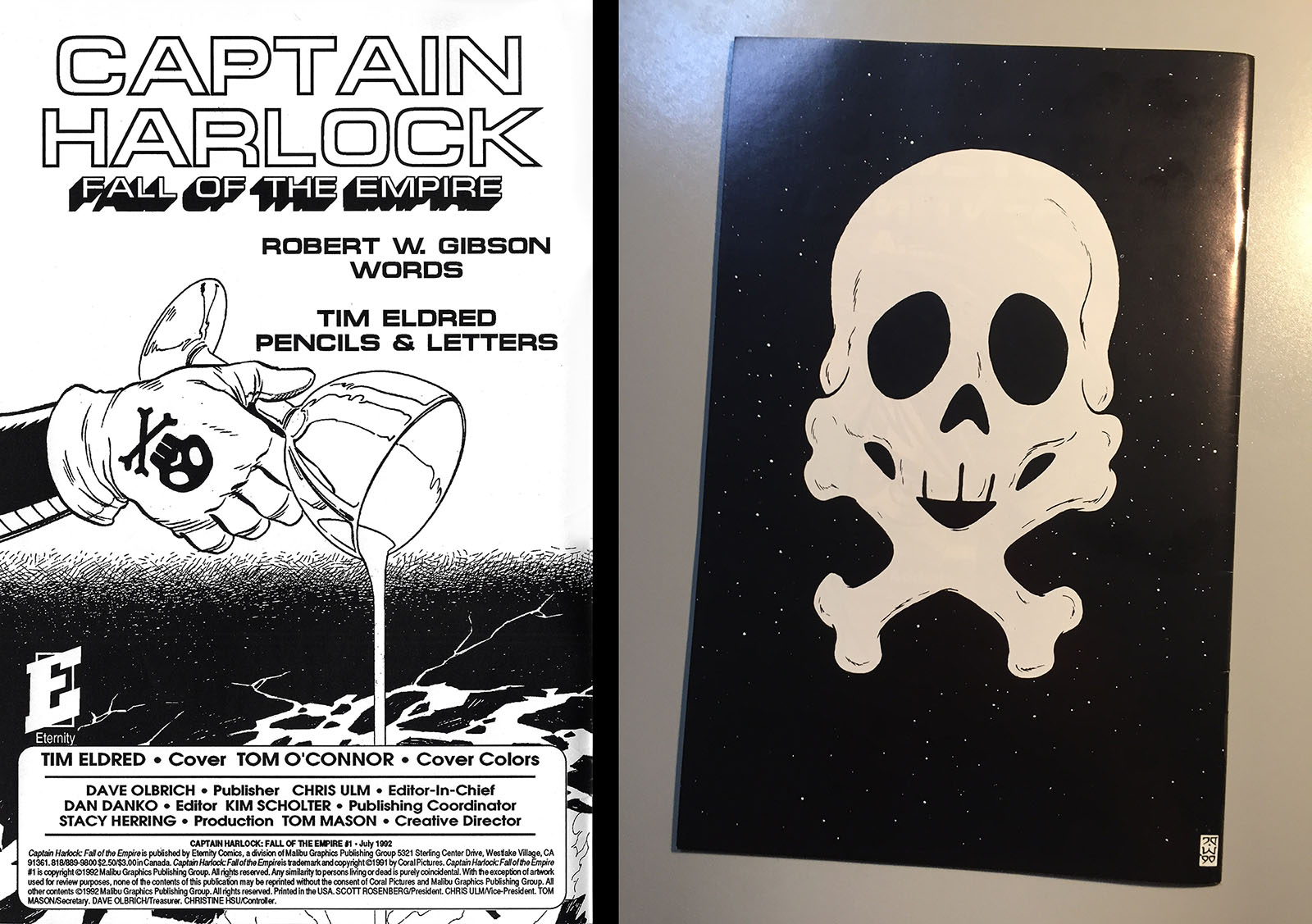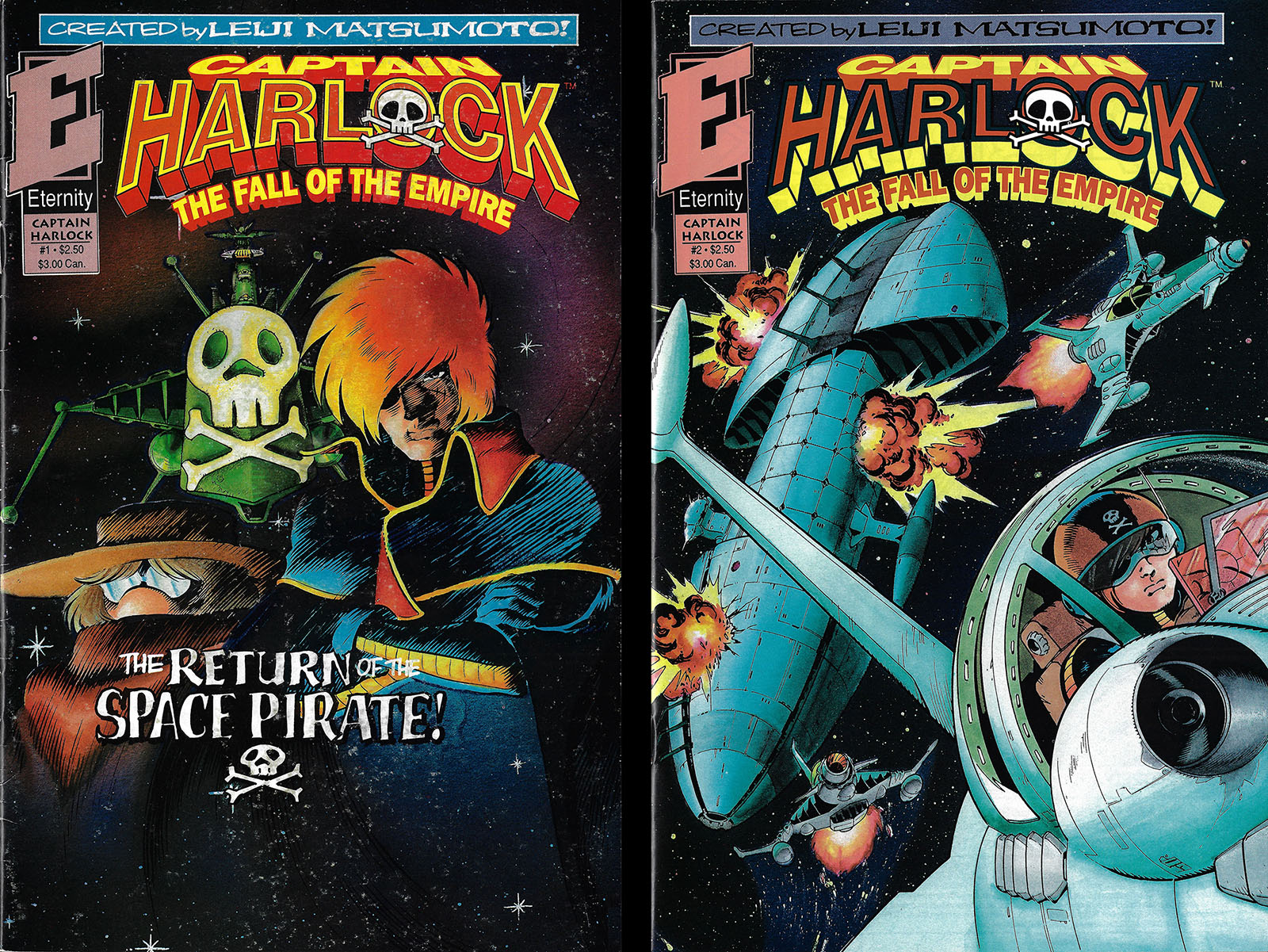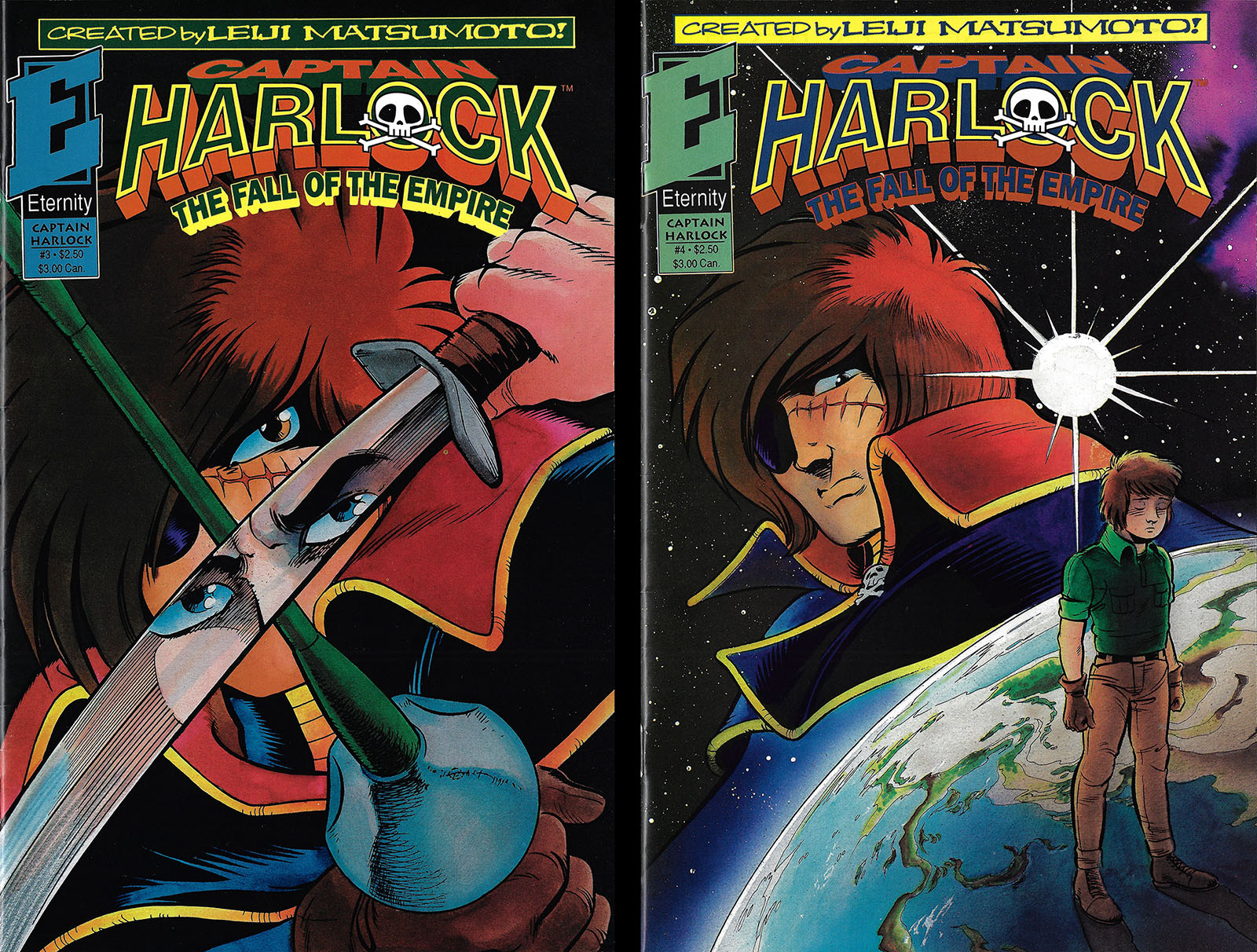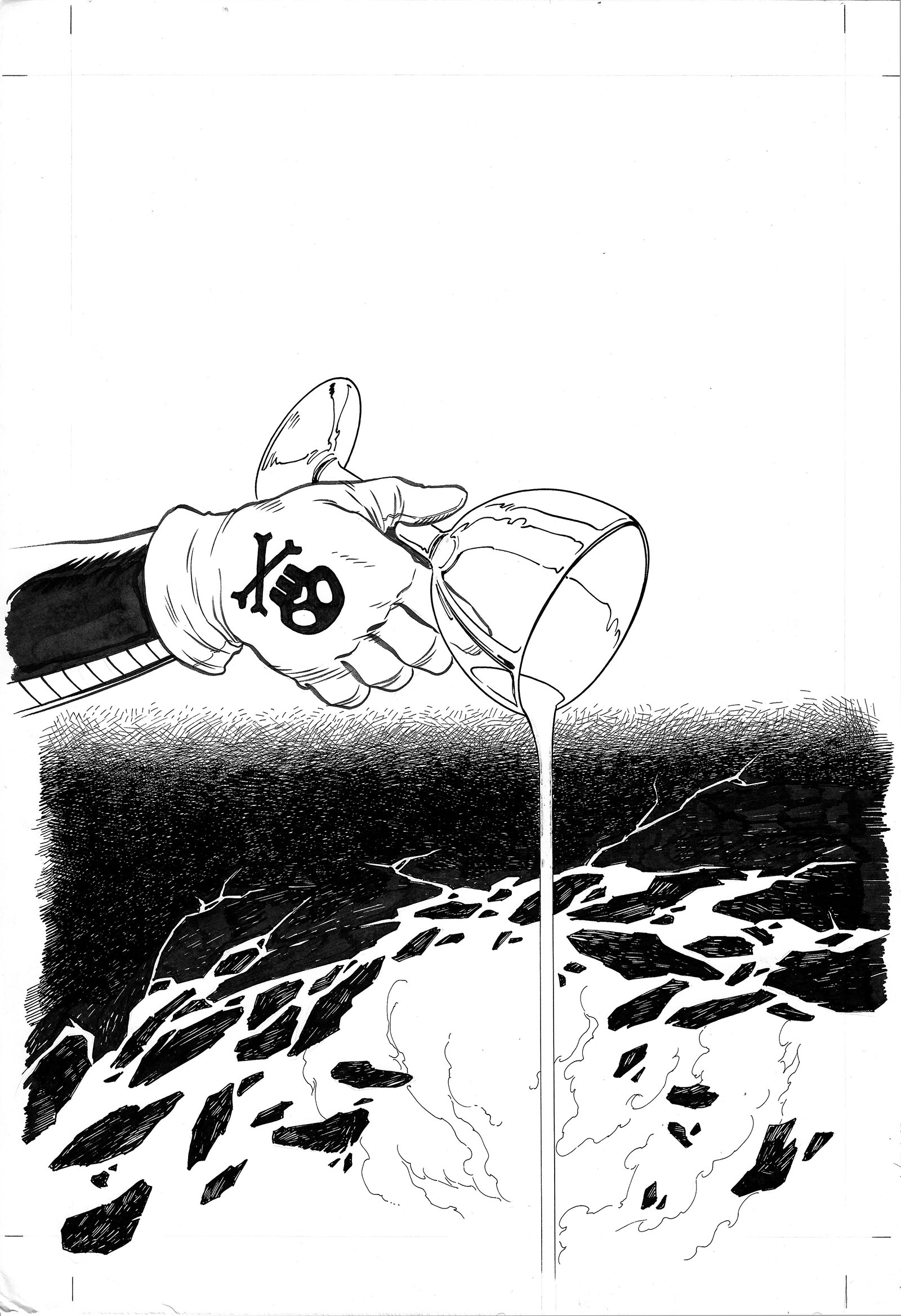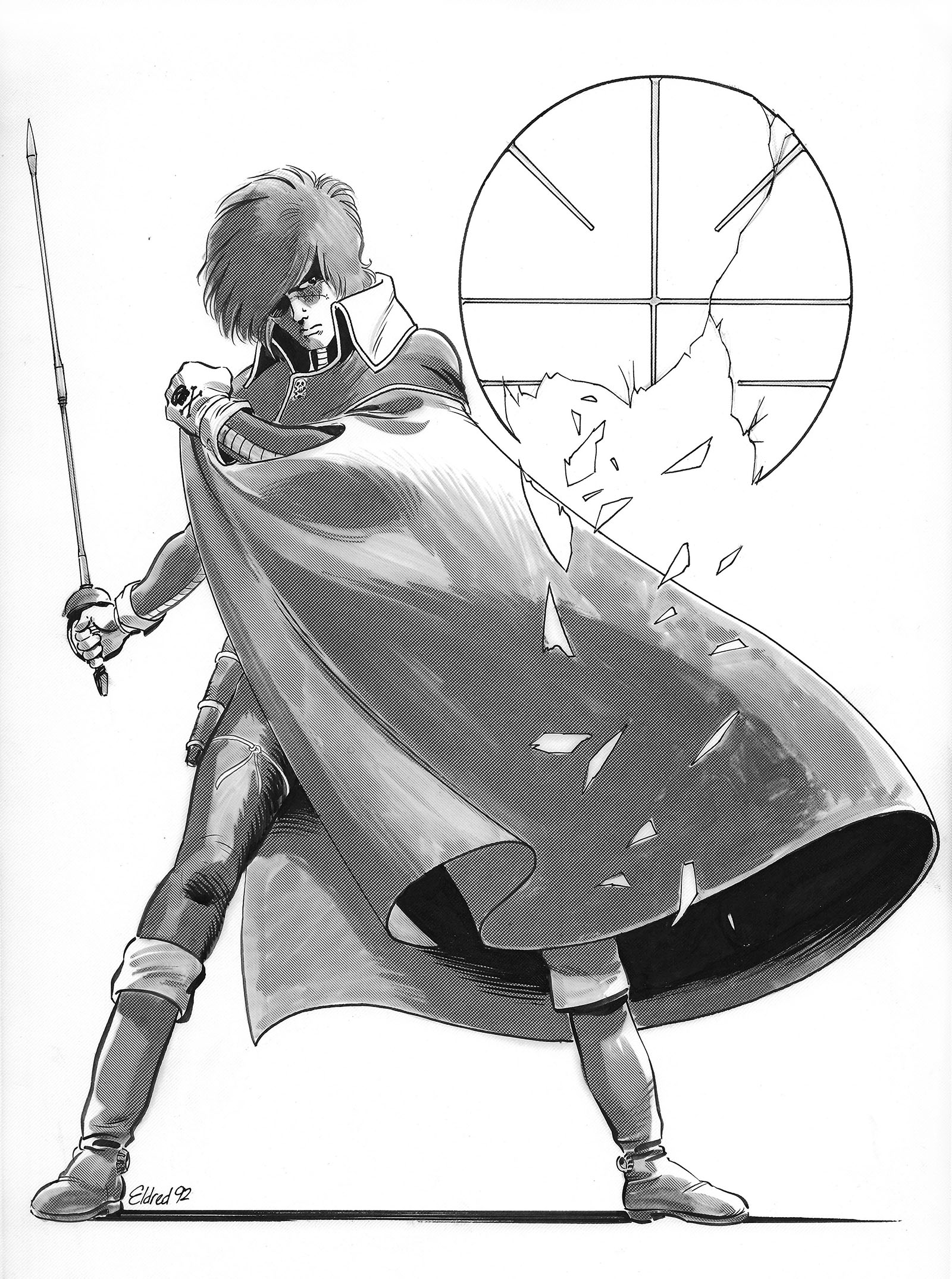Captain Harlock: Fall of the Empire, 1992
The cover art for the first issue was my personal favorite
of the entire run, a whole different illustration style that
worked beautifully with the character designs.
Unfortunately, color turned it into mud (see below).
As I took up my pencil to start on this miniseries in July 1991, I’d been drawing Captain Harlock comics for seven months, completing a total of nine issues. I was now working a full year ahead of publication; Fall of the Empire #1 wouldn’t be sold in stores until July 1992. Owing to that, the editor told me we were going to take a break after this.
“Take a break” were the three scariest words I could imagine back then. I sure couldn’t take a break from paying my rent or my bills, could I? The Robotech Invid War comics would still go on for a while, but I needed two assignments a month to keep my head above water, and Eternity Comics didn’t have another one set up to replace Harlock.
This situation seats you on an emotional rollercoaster that is endemic to a project-based career. It’s great to finish a page and triumphant to close out another issue, but the flip side is that you’re now a step closer to the big, gaping hole in your future. I still experience that today when I’m storyboarding TV cartoons. Any time you wrap production on an episode, you feel like a colossus. Then you look at the calendar and count how few weeks remain before you have to scrounge for work again like a hungry mouse.
I’ve always been extraordinarily lucky to find that next job when I needed it. Skill plays a part, too, but it’s not nearly as important as luck (and timing, its eternal handmaiden). All the skill in the world won’t get you on a production crew if the positions are filled already. You make your own luck by constantly keeping an eye on your industry and making your friends aware of your circumstances. So far, that luck has usually weighed in my favor. And when it hasn’t, I’ve been careful to keep a healthy balance in my savings account.
Sorry if this isn’t the information you were looking for when you started reading this article, but part of my mission here is to talk about career maintenance in addition to the career itself. I sure wish someone had written words like this for me to read back when I was learning lessons the hard way.
And now back to Space Pirate Captain Harlock, already in progress.
Scholars of Leiji Matsumoto’s “Leijiverse” know all about the intricate labyrinth that defies all attempts to put his stories into a single continuity. The same is true of Captain Harlock, but the simplest way to think about the primary tales is that he fights the Illumidas in his early years before facing off against the Mazone in his later years. Somewhere in between, he wanders in and out of Galaxy Express 999. I’m not saying this is a smooth progression, just that putting the stories in that order makes them slightly easier to reconcile.
That’s what Writer Robert Gibson decided early on when he began his work on the comics. If the series lasted long enough, he would chart a path along that line of continuity. When he started writing these four issues, his goal was to close out the Illumidas story.
It picked up where Deathshadow Rising and the Christmas special left off, and since the Arcadia was still being pieced back together Robert traded space battles for personal ones. That was fine with me. I love space battles, but after the tour de force of Deathshadow, I didn’t mind handling something easier.
My figure drawing still needed work, but was steadily improving. Alternating this project with the more realistically drawn Robotech comics made me more aware of the tension between my natural style and the Leiji Matsumoto aesthetic. It wasn’t hard to capture, but it wasn’t helping me to advance. If I’d been after assignments from any mainstream publishers, showing them Captain Harlock pages wouldn’t have gotten me anywhere. So there’s another valuable lesson: if you go too deep into the fringes, you might have a hard time getting out again.
In terms of work continuity, it was kind of interesting to see the six issues of Deathshadow Rising come out one by one while I was drawing these four. Every time that happened, I’d see where I was six months earlier and recognize what I’d improved upon since then. Or, in other cases, it gave me a chance to take an objective look and make a new effort to improve.
I finished Fall of the Empire #4 in October ’91, the same month Deathshadow #6 hit the shelves. There would be a break of two months until the Christmas special came out, then a further seven months would pass before Fall #1 arrived. I have no idea why anyone at Eternity thought that was a good plan, but they did a lot of things that made no sense to me.
For example…
At left is the inside front cover that appeared in all four issues. I was credited for “pencils & letters” with no indication of “inking.” Which made it sound like these comics were inked by no one. Also, the point of the illustration was lost when the bottom portion was covered by the company box, so it ended up just being confusing.
The back covers (above right) were just plain dumb. Usually there would be an ad for some other Eternity title. Instead, they got one of the Waltrip brothers (who drew the nauseating Robotech Sentinels comics) to create a skull and crossbones image. Instead of drawing the authentic Captain Harlock version, they just sort of whiffed it. Ridiculous.
And finally, as you examine the four covers, do you see any reference to a Robotech bonus feature inside? No? Well, there was one. A story called Firewalkers (spun off from Invid War) was serialized through all four issues in the hopes of luring some Robotech readers over to Captain Harlock. But there wasn’t a single word about it anywhere, as if the editor thought there was no need to tell anyone.
Seriously, we all had plenty of challenges to deal with back then, but there’s no excuse for missing something this obvious. That particular editor has moved on to become a prolific writer, so perhaps he learned from his mistakes.
After this, Robert Gibson and I would reunite for one more Captain Harlock miniseries from Eternity called The Machine People, and in my opinion it was the best thing we ever did together. You’ll see.

